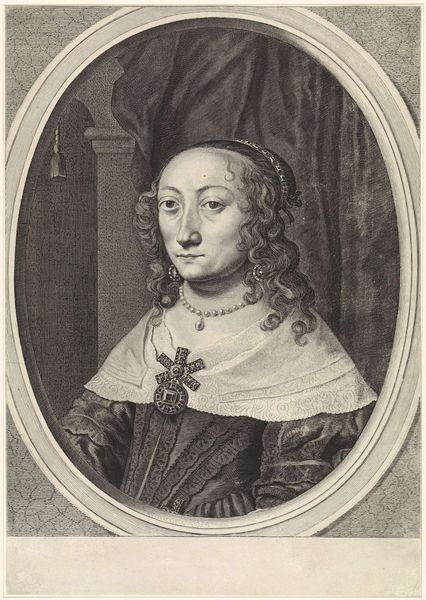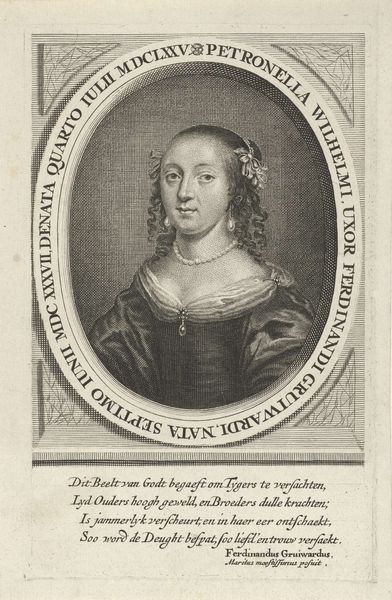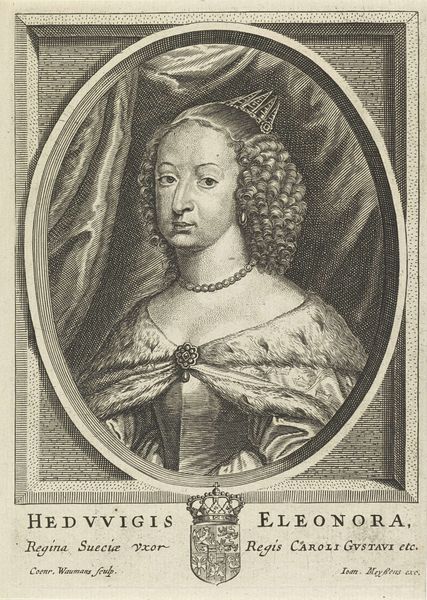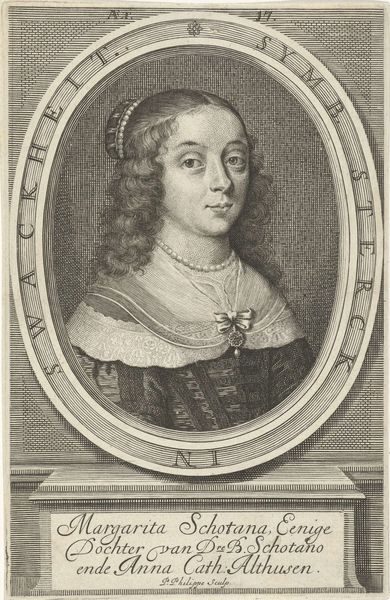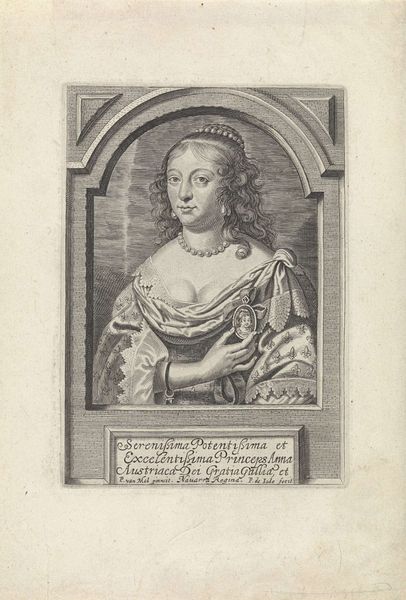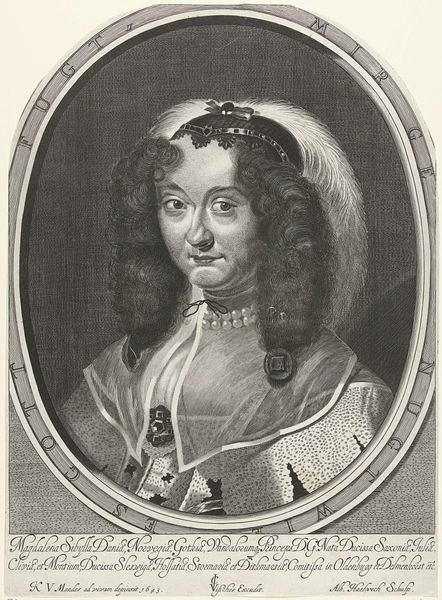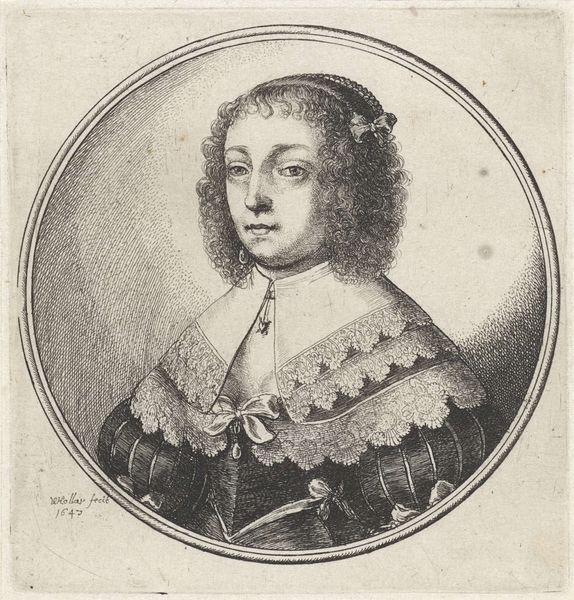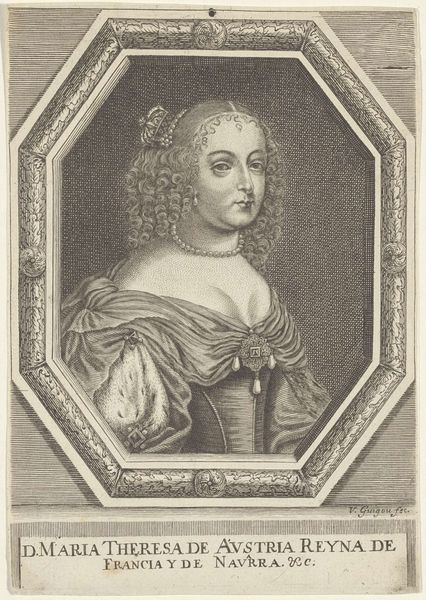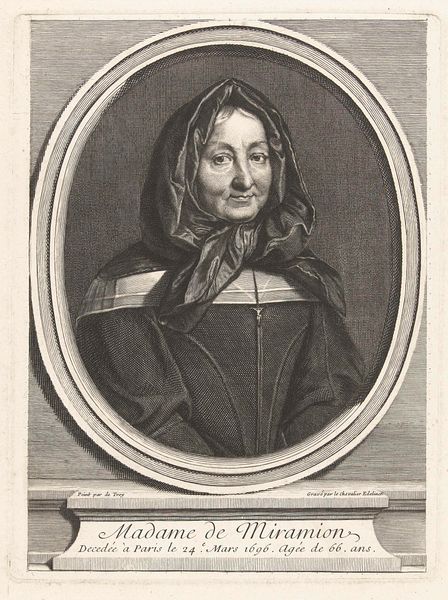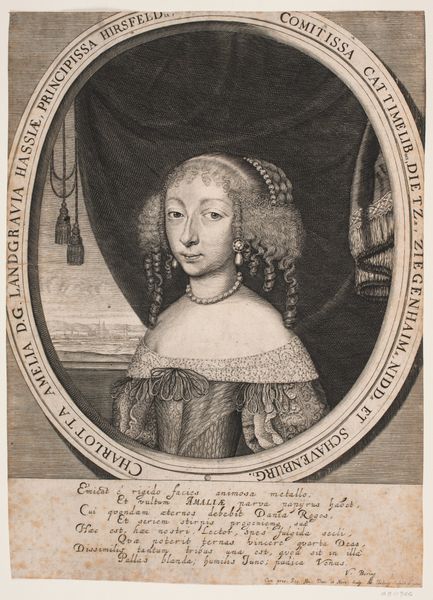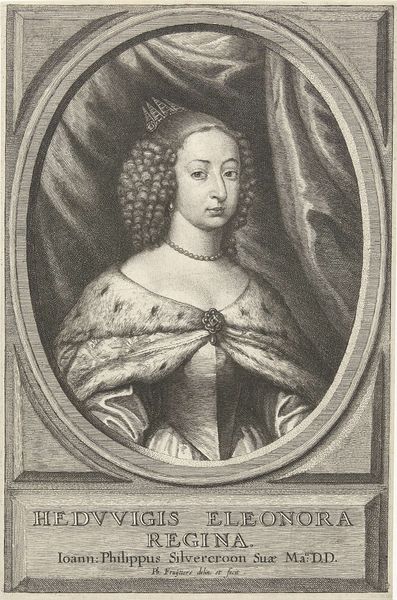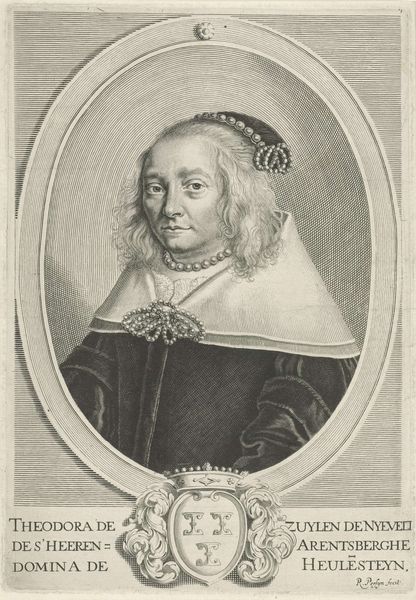
print, engraving
#
portrait
#
baroque
#
dutch-golden-age
# print
#
old engraving style
#
form
#
line
#
engraving
#
columned text
Dimensions: height 156 mm, width 103 mm
Copyright: Rijks Museum: Open Domain
Editor: Here we have Crispijn van de Passe's "Portret van Anna Catharina Althusius," from after 1626, currently housed at the Rijksmuseum. It's an engraving, which gives it such a distinctive, almost stark feel. What jumps out at me is the contrast between the delicacy of the lines creating the portrait and the rather formal inscription at the bottom. What do you see in this piece? Curator: From a materialist perspective, the very process of engraving becomes central. Think about the labor involved – the meticulous act of cutting lines into a metal plate. It’s not just about replicating an image, but about a whole mode of production tied to the social status of both the sitter and the commissioner of the print. Editor: So you're saying the print medium itself gives us insight into Dutch society at the time? Curator: Precisely. Engravings like this democratized portraiture to an extent. Though still a costly endeavor, it allowed for wider circulation and consumption of images of notable individuals beyond the elite who could afford painted portraits. Consider also the materials themselves—the copper, the ink, the paper. These were trade commodities, connecting this image to broader economic networks. Who had access to these materials and skills? Editor: It’s fascinating to think about the networks behind a single image. How would the process of creating and distributing it influence how it was received? Curator: That's key. An engraving like this wasn't just about aesthetics, it was part of a system of patronage, labor, and material exchange. Recognizing these elements allows us to question the conventional boundaries between art, craft, and commodity. We start to see that an image itself it's both an artistic accomplishment, and product of manufacturing. Editor: I never thought about printmaking as a social statement before, but this definitely sheds light on the value of process and labor in understanding art! Curator: Exactly. It's not solely about the image; it’s also about the means through which that image came into being.
Comments
No comments
Be the first to comment and join the conversation on the ultimate creative platform.

